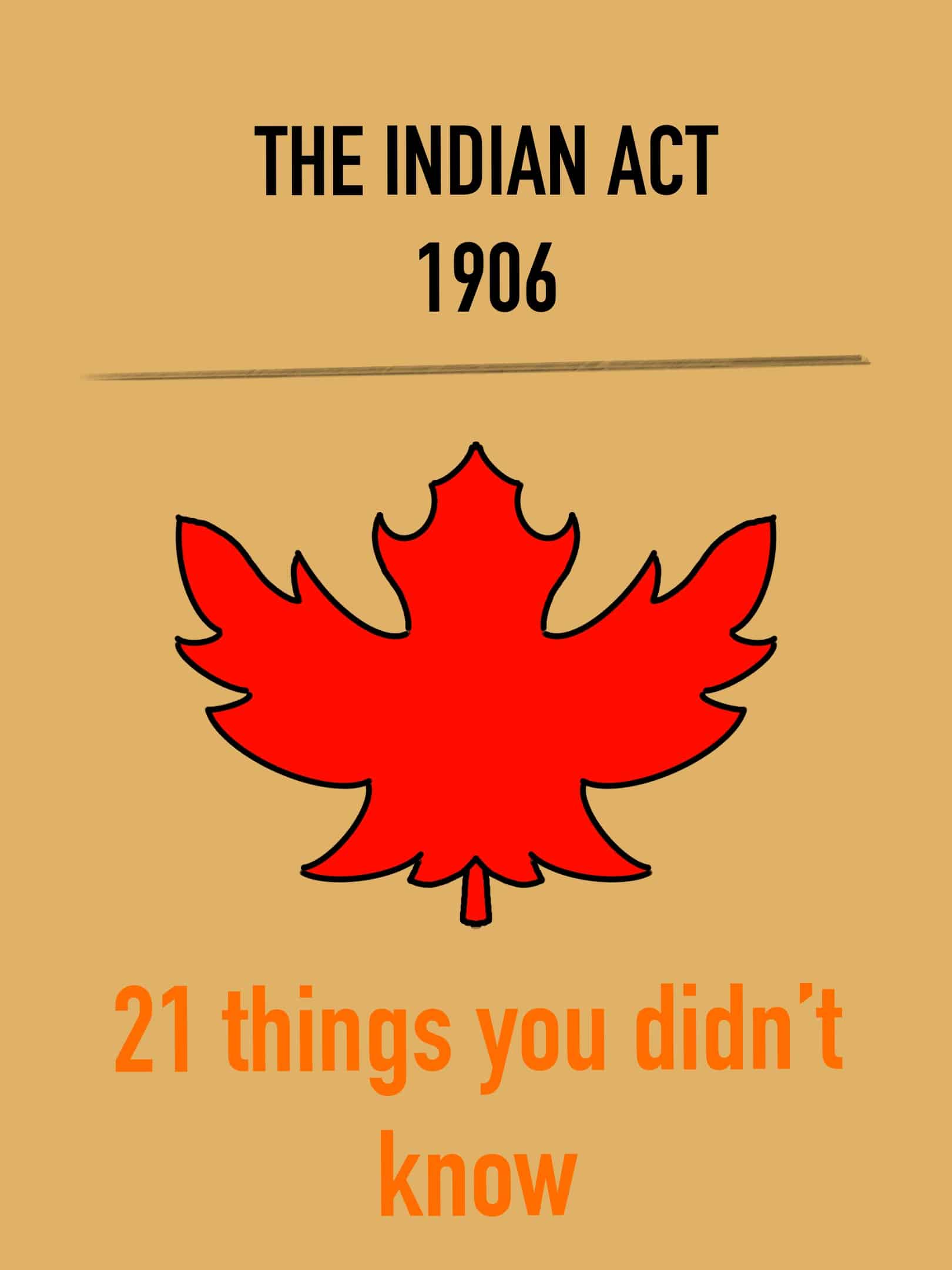21 Things You May Not Know About the Indian Act: Seeking truth
Bestselling author Bob Joseph dives into the lasting impacts of the Indian Act and how we can move toward reconciliation.
September 30 marked the International Day for Truth and Reconciliation, also known as Orange Shirt Day. This day serves as a reminder of the historical conflicts that have impacted Indigenous nations. It honours the victims and survivors of the residential school system brought forth by the government in an inhumane effort to assimilate Indigenous children into Western culture.
The Indian Act was established in 1876 to further the government’s assimilation goal. This involved not only stripping kids away from their families and cultures, but also subjecting them to emotional, physical, and sexual abuse. Since 1998, efforts have been made towards reconciliation, but many of the atrocities that took place still remain uncovered, and understanding how these consequences still manifest themselves today is an ongoing process.
Bob Joseph, founder of Indigenous Corporate Training, certified master trainer, and author of the bestselling book titled 21 Things You May Not Know About The Indian Act depicts the various ways in which the legislature contributed to long-lasting harm and stereotypes of the Indigenous communities in his book. But it also paves a way forward. While the book attracted immense success, it all began as a blog post. Having worked with the government and numerous organizations to train them on working with Indigenous peoples, he wanted to touch a broader audience.
“I could see the impact that those learners experienced as part of the training and the feedback they gave me. And I was thinking one day, ‘Gosh, it would be nice to be able to reach out beyond,’” shares Joseph in an event organized by Rotman Commerce. After learning that readers tend to favour lists, he put together a list of 21 things people might not have known about the Indian Act, reaching over 50,000 readers within the first month. As of now, it has attracted over 500,000 views.
In 1793, after the Battle of Quebec and before the Indian Act was forged, he notes that King George III recognized Indigenous peoples as both military and economic allies with proprietary rights to their lands. Joseph shares that treaties concerning how to purchase land from Indigenous communities were even discussed. The king’s vision was one of peaceful coexistence. But by the time of confederation, the directives being taken for Indigenous policies changed.
“The thought process had emerged that this was a dying race of people,” explains Joseph. “They weren’t fitting in militarily and economically anymore. And so, this idea started to creep into the body politic [that] as deaneries of people, we’re going to help them assimilate—we’re going to make them like ‘everybody else.’”
The British North America Act was then passed in 1867 with section 91(24) handing over control of Indigenous land to the government. “The idea was eventually they would assimilate and once they’d assimilated, there’d be no need to do new treaties. There’d be no need to honour historic treaties—the Indian Act would disappear,” he notes. Their intentions, however, were never fulfilled.
Since then, the government has initiated conversations about transferring property rights of Indigenous lands back over to the Indigenous Peoples and abolishing the Indian Act, seemingly in an effort to be just. But to the Indigenous communities at the time, Joseph shares, what they heard was, “You’re just going to cut us loose now at our worst point in history ever, with no ability to pick ourselves up and look after ourselves? No…we’re not letting you out of your 91(24) relationship.’”
With the way the act was set up, the federal government had a duty to act in the best interest of the Indigenous Peoples. As such, Joseph explains that the Indigenous community pointed out that for them to be let out of their legal obligation, the government must provide their communities with the means and resources to sustain their lands as well as some decision-making ability. These efforts culminated in an amendment of the Constitution in 1982 to recognize Indigenous Peoples and their treaty rights. “So, 1982 from a legislative assimilation policy perspective marked the beginning of the end for forced cultural assimilation,” explains Joseph.
That said, he stresses that it isn’t the end, “because the Indian Act is still here. We haven’t got rid of it yet, and it still actually does a lot of what it was designed to do, which is to try to get people off of reserves and make people non-status [Indigenous].”
Joseph explains that what we’ve come to know is reserves were in fact created by the government following the Indian Act for Indigenous Peoples as a territorial acknowledgement, acting more as a holding camp since the policy prevented them from leaving these areas. In fact, they had to obtain written permission before leaving; the federal government had control over the use of the reserves. Reserves then, could be used for many public works like railways and so on—uncultivated lands could be leased out to private individuals for farming.
Joseph notes that reserves were not subject to seizure under the law, making it hard for them to build successful economic communities. “It makes it really tough for them to participate in the economy. They can’t borrow money against the land or the houses they live in. And Canada didn’t want them doing that, […] because if they built thriving economic communities, they were not going to want to leave those reserves,” he remarks. Instead, the government wanted to encourage voluntary and enforced enfranchisement—the termination of one’s Indigenous status. Simply put, part of the reasoning from the government’s perspective, Joseph explains, was that if the Indigenous peoples sought to have more opportunities, they simply had to give up their status and assimilate, thereby reducing the number of Indigenous peoples that government would be financially responsible for.
Joseph highlights that the Indian Act was particularly harsh on Indigenous women. For example, before 1985, if an Indigenous woman married a non-Indigenous man, she and her children would lose their status. On the other hand, if Indigenous men married non-Indigenous women, both he, his wife, and their children would keep their status. Losing status would mean that they lost their right to live on reserves. “The Indian agent would come around [and] make sure those non-status women had to leave the reserve that they were a part of,” elaborates Joseph.
In addition to not being allowed to purchase alcohol or ammunition, they were forbidden from voting, speaking their native language, practicing their religion, and many were renamed.
With all these injustices specifically aimed at Indigenous peoples, it is clear why such drastic inequity persists. While Joseph thinks that breaking out of the cycle is possible, he stresses that the system was built to prevent Indigenous peoples from success. “It’s designed to keep you poor so that you want to leave and go try to get rich somewhere else. It’s kind of a core value,” he elaborates.
The Indian Act was a project of gradual assimilation, not unlike genocides. While the act has not yet been abolished everywhere, some communities have been successful in their negotiations. For example, Joseph notes that the Nisga’a from British Columbia entered an agreement to get rid of the Indian Act and make their communities more self-reliant. They can now pass their own legislation so long as they do not conflict with general provincial or federal laws. “It is a great model of the kinds of things, the range of things that we can do. It really tackled a whole range of issues. Legislative authority, taxation, housing, fee simple ownership,” explains Joseph.
While reconciliation will be a long process, Joseph remains optimistic that it will become a reality over time and that we are going in the right direction. “I think the [Truth and Reconciliation Commission of Canada] opened the mind of Canadians to the issue,” Joseph explains, “and the Kamloops 215, Orange Shirt Day opened the hearts of Canadians to really confront the truth and reconciliation work that we’re doing here today.” As such, a crucial part of continuing the work on reconciliation is recognizing the truth to effect change.
Features Editor (Volume 49) | features@themedium.ca —Maneka is a third year student completing a specialization in Philosophy with a minor in political science. Previously, she served as one of The Medium’s Staff Writer and Associate Features Editor. As this year’s Features Editor, Maneka hopes to raise awareness, shed light over current issues, and highlight student voices and organizations. When Maneka is not studying, writing, or working, you’ll probably find her binging on, or rather re-watching her favorite shows, listening to music, thinking about her dog, or likely taking a nap.


